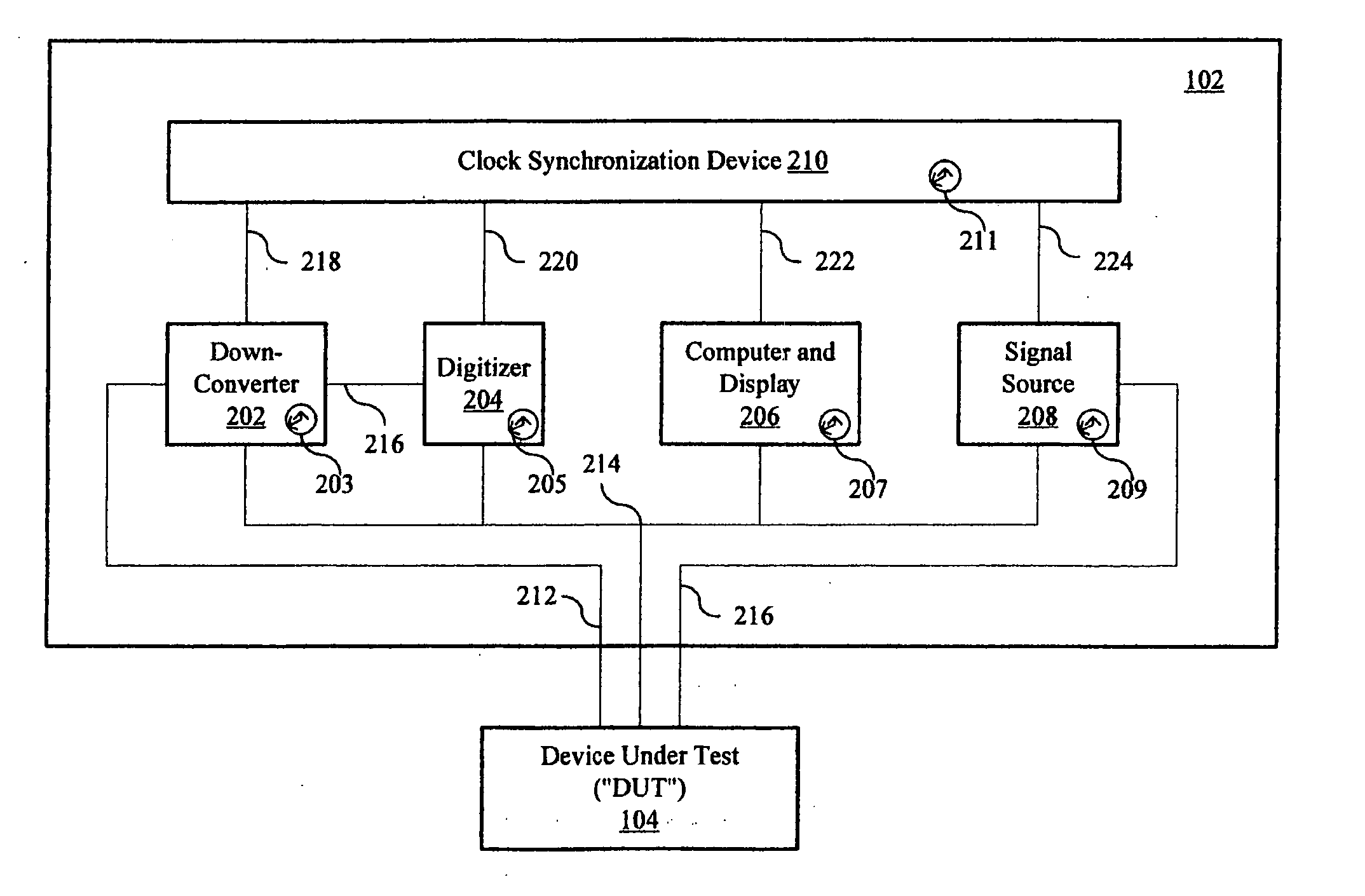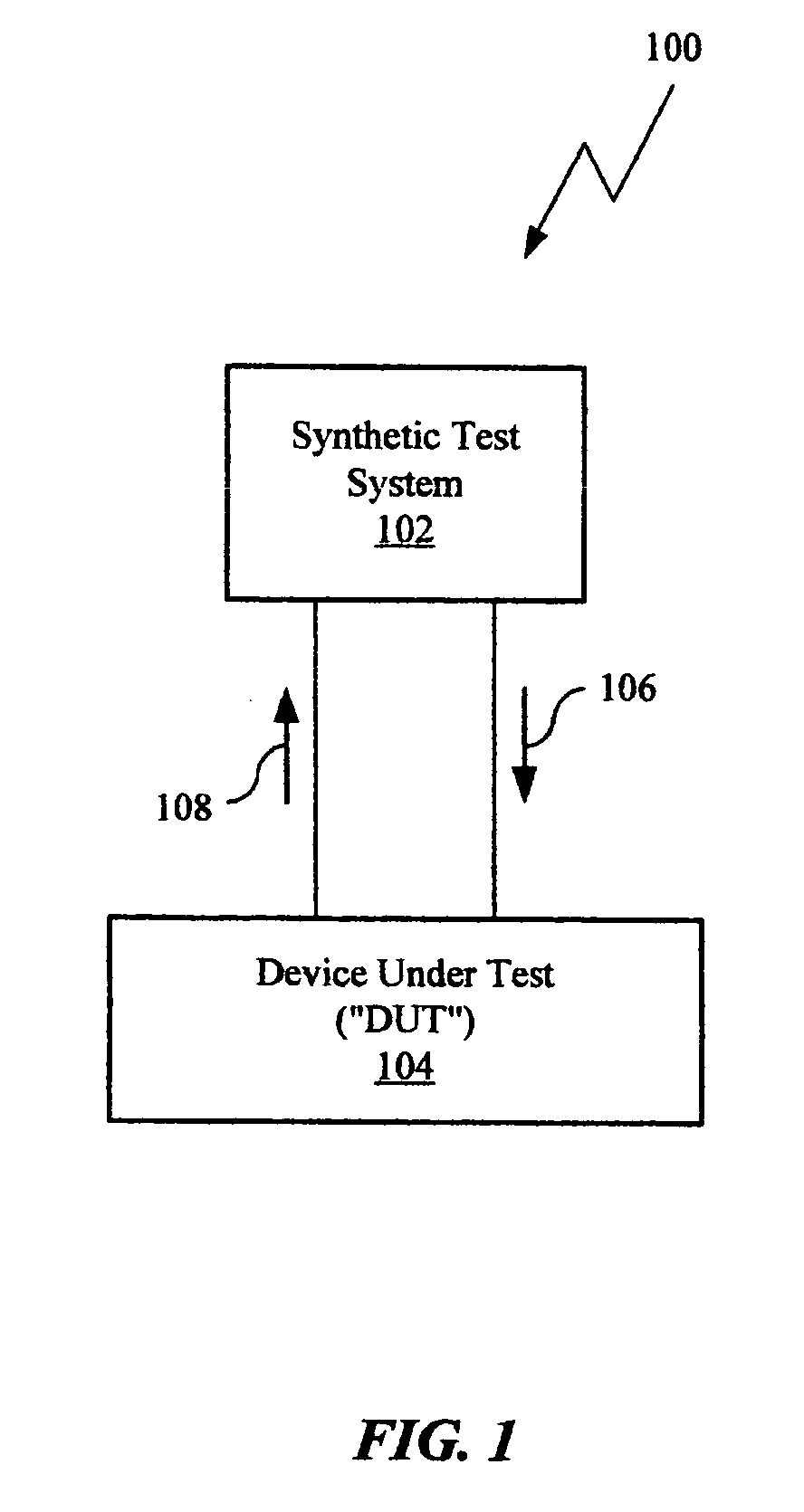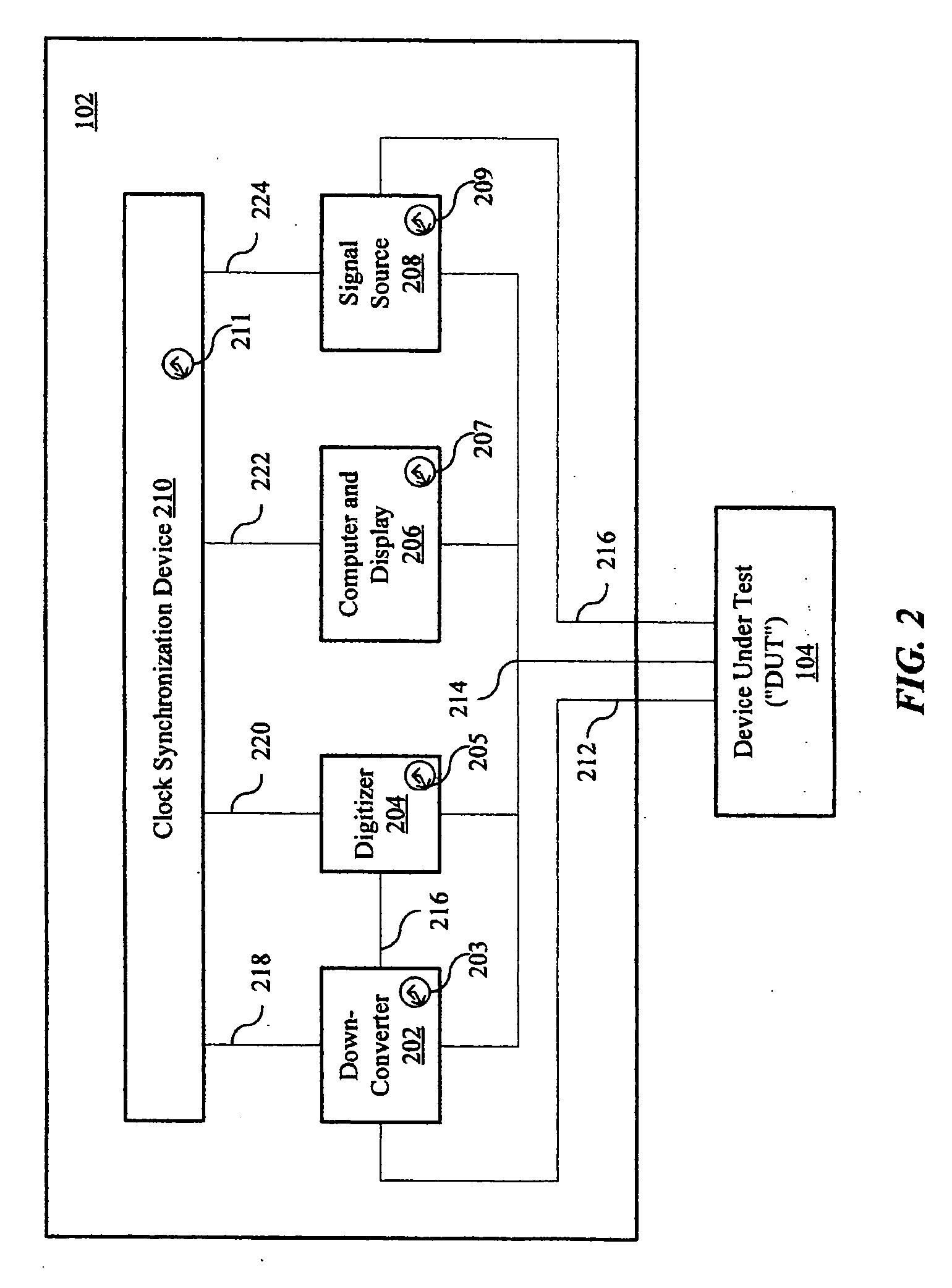Swept-frequency measurements with improved speed using synthetic instruments
a technology of synthetic instruments and swept frequency, applied in instruments, testing/monitoring control systems, cathode-ray oscilloscopes, etc., can solve the problems of adding considerable complexity to the system, difficult or impractical approach, and inability to use swept frequency measurement modes
- Summary
- Abstract
- Description
- Claims
- Application Information
AI Technical Summary
Benefits of technology
Problems solved by technology
Method used
Image
Examples
Embodiment Construction
[0016] An approach for highly synchronized swept-frequency measurements is described. In FIG. 1, a block diagram 100 of an example of a synchronized synthetic test system 102 for conducting swept-frequency measurements is shown. The synthetic test system 102 may include a number of test modules that reside in independent test boxes (or test devices) or may have test modules combined in two or more test boxes or (test devices). The test devices in the synthetic test system may be in signal communication with a device under test (“DUT”) 104. Typically there may be at least one signal path for injecting a signal and another signal path for obtaining measurements from the DUT. However, it is appreciated by those skilled in the art that in some test systems it is possible for the DUT 104 to generate a signal without injecting a signal from the synthetic test system 102. Returning to the example shown in FIG. 1, a signal 106 may be injected into the DUT 104 and measurements 108 may be obt...
PUM
 Login to View More
Login to View More Abstract
Description
Claims
Application Information
 Login to View More
Login to View More - R&D
- Intellectual Property
- Life Sciences
- Materials
- Tech Scout
- Unparalleled Data Quality
- Higher Quality Content
- 60% Fewer Hallucinations
Browse by: Latest US Patents, China's latest patents, Technical Efficacy Thesaurus, Application Domain, Technology Topic, Popular Technical Reports.
© 2025 PatSnap. All rights reserved.Legal|Privacy policy|Modern Slavery Act Transparency Statement|Sitemap|About US| Contact US: help@patsnap.com



